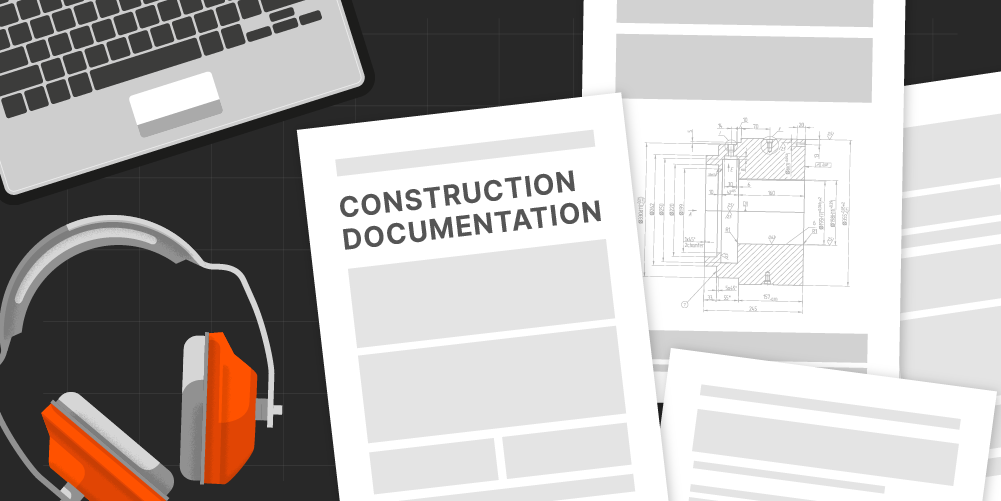— 6 min read
A Contractor’s Guide to Preliminaries in Construction Contracts
Last Updated Mar 27, 2025
Last Updated Mar 27, 2025

Every construction contract includes costs that fall into one of two categories:
Direct Costs – Expenses tied to specific work sections, such as materials and labour.
Indirect Costs – Project-wide expenses that support construction but aren’t linked to specific activities.
Preliminaries, or "prelims," fall into the second category. They cover essential costs such as site setup, project management, compliance, and temporary utilities—critical elements that ensure smooth project execution but aren’t directly part of the build itself.
In this guide, we’ll break down what preliminaries include, their typical cost percentage, and why they matter in project planning.
Table of contents
What Are Preliminaries in Construction?
Preliminaries refer to the indirect costs required to establish, manage, and support a project before and during construction. These costs can be:
- One-off expenses – Such as permits, environmental assessments, and insurance.
- Ongoing expenses – Such as site offices, scaffolding, security, and waste management.
Though they don’t contribute directly to physical construction, preliminaries are essential for keeping a project on schedule, within budget, and compliant with regulations.
Common Preliminary Costs
A construction preliminaries list is often extensive and includes costs for items within every aspect of a project. However, there are some common items that are almost always included.
1. Management and Administrative Costs
These costs cover various operational aspects of a construction project. These costs include payments to project and site managers whose work spans the entire project, rather than being tied to a specific section. They also encompass the costs associated with obtaining necessary permits and approvals, as well as securing insurance policies, such as workers’ compensation or public liability insurance. These expenses are critical for ensuring that the project is managed efficiently, meets legal requirements, and is protected against potential risks.
2. Site Overheads and Temporary Facilities
From access roads and erosion control to site offices, construction projects require several elements that ensure the site is ready and organised for efficient work. Temporary utilities like electricity, water, and internet are essential, alongside other preliminaries such as fencing, waste management, and cleaning. These elements help maintain a functional, safe, and compliant site, ensuring the project can progress smoothly and without delay.
3. Quality Assurance and Compliance
Quality assurance and compliance are crucial preliminaries in construction, ensuring the project meets both safety standards and environmental regulations. This category includes on-site health and safety measures, such as personal protective equipment (PPE), first aid facilities, and environmental management practices like dust or noise control. It also covers preliminary testing to assess the quality and stability of construction materials, such as concrete slump tests for workability and strength, soil compaction tests for foundation stability, and waterproofing tests for roofs and basements. These measures help mitigate risks, ensuring the project meets regulatory standards and is built to last.
4. Mobilisation and Demobilisation
Mobilisation and demobilisation are key components of construction preliminaries, covering the logistical costs involved in setting up and tearing down a worksite. This includes the transport and delivery of site equipment, as well as the setup and removal of temporary structures like site offices and scaffolding. Once the project is completed, it also covers site restoration and cleanup, ensuring the site is returned to its original condition or prepared for its next use. These costs are necessary to ensure a smooth start and finish to the project, with minimal disruption and a clean, safe site.
What Percentage of a Contract Do Preliminaries Represent?
Preliminaries typically account for 5%–15% of total construction costs, based on industry benchmarks. However, this percentage varies depending on factors such as:
Pro Tip
Contractors should reference industry standards, past project data, and contract-specific cost breakdowns when estimating preliminary costs to ensure accuracy.
- Project Type & Complexity – Large commercial or infrastructure projects often have higher preliminary costs.
- Project Duration – Longer projects require extended site management and temporary facilities.
- Location & Logistics – Remote sites often have higher setup and compliance costs.
- Contract Type – Lump sum vs. cost-plus contracts may allocate different percentages.
Why Are Preliminaries Important?
Preliminaries ensure a project runs smoothly, remains financially transparent, and complies with legal requirements. A well-structured preliminary breakdown benefits stakeholders in several ways:
Increased Transparency
Owners get a clearer view of budget allocation beyond direct construction costs.
Improved Cost Accounting
Reduces unexpected expenses that could disrupt cash flow or cause delays.
Better Resource Allocation
Helps contractors assess where costs are necessary, preventing overspending in non-essential areas.
Stronger Bid Evaluations
Developers can compare procurement strategies and contractor bids more effectively.
How Preliminaries Are Used in Construction Contracts
Preliminaries play a crucial role in the financial and logistical planning of construction projects. They appear in several key contract documents and project phases, ensuring that indirect costs are accounted for and transparently managed.
Pro Tip
It’s important not to confuse preliminaries with preambles in construction contracts:
- Preliminaries cover costs and requirements for setting up and managing a project (e.g., site offices, permits, safety measures).
- Preambles provide guidelines, definitions, and measurement rules to ensure consistency in pricing and execution.
While preliminaries list cost items, preambles explain how the work should be carried out and measured.
- Bills of quantities (BoQ). Used by quantity surveyors and contractors to provide a structured breakdown of all project costs, ensuring transparency in pricing and cost allocation.
- Tender documents. Used by project owners and procurement teams to ensure bidders account for site overheads, management, and compliance costs in their pricing.
- Construction contracts. Included in standard Australian contracts (e.g., AS 4000, AS 2124) to define and formalise general project costs, ensuring all parties agree on financial responsibilities.
- Cost plans and estimates. Used by quantity surveyors during the early planning phase to assess preliminaries, typically estimated at 5–15% of the total project cost.
- Progress claims and payment schedules. Used by contractors to justify staged payments for non-material costs such as site setup, temporary facilities, and project management.
Organising and Structuring Construction Preliminaries
When defining and organising preliminaries in construction contracts, it's common to use the National Building Specification (NBS) numbering system for consistency and clarity. However, contractors may also adapt this system or create their own numbering and text structure to fit the unique needs of their projects.
For example, in projects like Griffith University, the preliminaries would include a clear breakdown of different stages of the project. A typical construction preliminaries template will categorise key elements such as project location, procurement, management, and completion. These sections help ensure that all aspects of the project, from site setup to final handover, are clearly defined and easily referenced.
Here’s how such a template might be organised:
- Definition & Terminology: Clarifies terms used throughout the contract.
- Project Participants: Lists key people or organisations involved.
- Project Location (00-05-70): Identifies the site or location.
- Works Contract (00-10-70): Describes the overall scope of the contract.
- Procurement (00-30-70): Details the procurement strategy or process.
- Establishment (00-40-70): Covers the setup of the site and initial requirements.
- Management (00-50-70): Describes how the project will be managed day-to-day.
- Verification (00-60-70): Ensures quality assurance processes are followed.
- Administration (00-70-70): Outlines administrative responsibilities.
- Completion (00-80-70): Final steps to conclude the project.
Using a structured numbering system like this helps keep the contract organized and ensures that everyone involved has a clear understanding of the project’s scope, requirements, and stages.
Preliminaries are an important part of construction budgeting.
Accurately estimating and managing preliminaries helps contractors avoid budget shortfalls, delays, and compliance risks. By including a detailed breakdown in tenders and contracts, construction teams can ensure financial control, improve cost transparency, and drive better project outcomes.
Categories:
Tags:
Written by
Emma De Francesco
18 articles
Emma is currently Strategic Product Consultant at Procore where she loves partnering with clients to help them achieve the best possible results. She has worked as a Project Manager in previous roles, responsible for overseeing small to medium-sized projects across various sectors including commercial, health and lifestyle, retail, government and hotels. Throughout these projects, she managed everything from project costs, program and quality & safety, to design management, procurement, and authority approvals.
View profileExplore more helpful resources

Document Control, Mastered: Blueprints, Binders & the Cloud
In construction, poor document control is more than a hassle—it’s a liability. Mismanaged documents can delay builds, drive up costs, and cause security and compliance issues. It’s a challenge facing...

Construction Progress Claims: Keeping Cash Flowing
In construction, steady cash flow is critical—and progress claims help make that possible. These claims enable staged payments based on work completed, rather than waiting until project completion. In this...

Construction Analytics: The Key to Smarter Decision-Making
Data is everywhere in construction—embedded in schedules, site activity logs, safety reports, and cost tracking tools. Yet despite the abundance of available information, many construction decisions still hinge on gut...

Construction Document Management: The Challenges and Benefits of Embracing a DMS
Every construction project begins, continues, and ends with a mountain of paperwork. From initial bidding documents to contractor agreements, blueprints, variation orders, inspection reports, on and on it goes. And...